Your cart is currently empty!
Blog
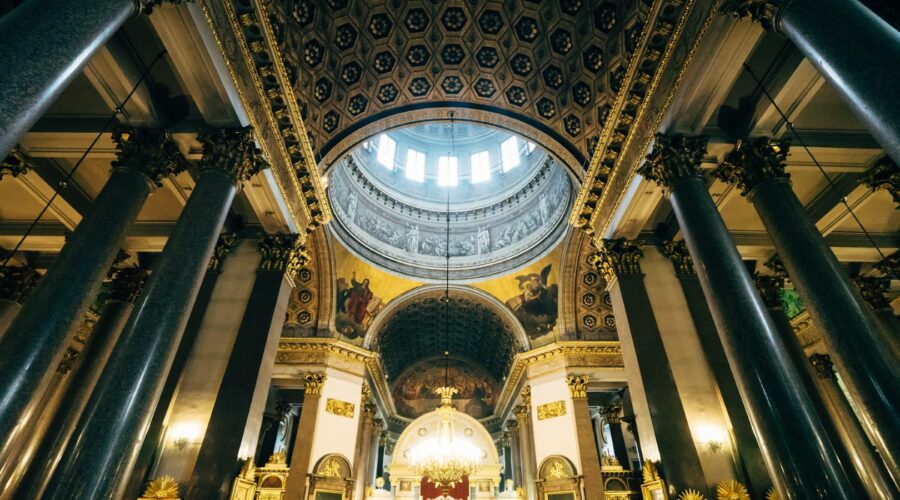
Discover the Liturgical Year: A Journey Through Christian Rituals and Celebrations
Introduction
The liturgical year is the yearly cycle of religious observances and celebrations in the Christian faith. It is a way of commemorating the life of Jesus Christ, from his birth to his death and resurrection. The liturgical year is also a time for Christians to reflect on their own faith and to grow in their relationship with God.
The Seasons of the Liturgical Year
The liturgical year is divided into three main seasons:
- The Paschal Triduum (Easter Triduum)
- The Season of Easter
- Ordinary Time
The Paschal Triduum
The Paschal Triduum is the central event of the liturgical year. It begins on Holy Thursday and ends on Easter Sunday. During the Paschal Triduum, Christians celebrate the death and resurrection of Jesus Christ.
The Season of Easter
The Season of Easter begins on Easter Sunday and lasts for fifty days. It is a time of joy and celebration, as Christians rejoice in the resurrection of Jesus Christ. The Season of Easter also includes the feast of Pentecost, which celebrates the coming of the Holy Spirit.
Ordinary Time
Ordinary Time is the period of the liturgical year that falls outside of the seasons of Advent, Christmas, Lent, and Easter. It is a time for Christians to focus on their daily lives and to grow in their faith.
The Liturgical Calendar
The liturgical calendar is a list of the feasts, holy days, and seasons of the liturgical year. It is used to guide Christians in their worship and devotion.
The Liturgical Colors
The liturgical colors are a set of colors that are used in the liturgy to symbolize the different seasons of the liturgical year. The colors are:
- Red: the color of blood, fire, and the Holy Spirit
- Green: the color of growth, hope, and life
- Purple: the color of penance, mourning, and royalty
- Rose: the color of joy and celebration
- White: the color of purity, innocence, and victory
The Importance of the Liturgical Year
The liturgical year is an important part of the Christian faith. It provides a framework for Christians to celebrate the life of Jesus Christ, to reflect on their own faith, and to grow in their relationship with God.
Tips for Observing the Liturgical Year
Here are a few tips for observing the liturgical year:
- Attend church services regularly.
- Read the Bible daily.
- Pray regularly.
- Participate in the sacraments.
- Attend retreats and workshops.
Conclusion
The liturgical year is a rich and meaningful tradition that can help Christians to grow in their faith. By observing the liturgical year, Christians can connect with the life of Jesus Christ, reflect on their own faith, and grow in their relationship with God.
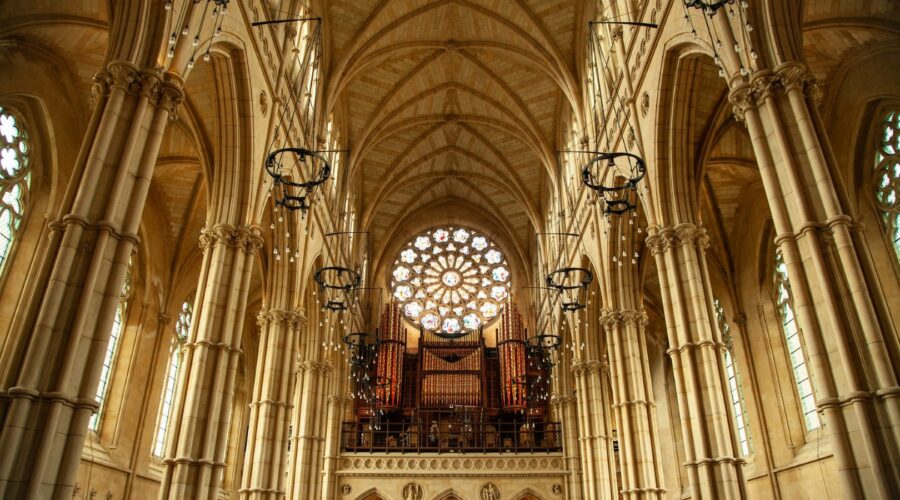
Discover the Ultimate Guide to Church Suites: Empowering Your Ministry
Introduction
In today’s modern world, churches are leveraging technology to streamline operations, enhance member engagement, and spread their mission. A church suite is a comprehensive software solution designed specifically to meet the unique needs of churches and other religious organizations. This guide will provide an in-depth exploration of church suites, covering their key features, benefits, and how to choose the right one for your ministry.
Benefits of Using a Church Suite
- Streamlined Operations: Church suites automate tasks such as managing finances, scheduling events, tracking attendance, and sending communications. This frees up valuable time for pastors and staff to focus on their core ministry.
- Enhanced Member Engagement: By providing a central platform for members to connect, church suites foster a sense of community and encourage participation in various church activities.
- Improved Communication: Church suites offer a variety of communication channels, including email, SMS, and push notifications, to keep members informed and engaged.
- Data Management: Church suites collect and store valuable data on members, donors, and activities, providing insights for informed decision-making.
- Cost-Effective: Compared to purchasing and maintaining multiple software solutions, church suites offer a comprehensive package at a more affordable cost.
Key Features of Church Suites
-
Member Management:
Track member information, family relationships, communication preferences, and spiritual growth.
-
Event Planning:
Create and manage events, schedule rooms, assign volunteers, and track attendance.
-
Financial Management:
Manage donations, track expenses, create budgets, and generate financial reports.
-
Communication:
Send email campaigns, SMS messages, push notifications, and newsletters to keep members connected.
-
Website and Mobile App:
Provide a modern online presence and mobile access to church information and resources.
Choosing the Right Church Suite
Selecting the right church suite is crucial for maximizing its benefits. Here are some key considerations:
- Size and Needs: Assess the size of your congregation and identify the specific areas where you need support, such as member management or financial tracking.
- Budget: Determine your budget and compare the cost of different church suites, including subscription fees, implementation costs, and ongoing maintenance.
- Features: Evaluate the features offered by each suite and ensure they align with your ministry’s needs. Consider both core features and any additional modules or integrations you may require.
- Ease of Use: Look for a church suite that is intuitive and easy to navigate for both staff and members. Training and technical support should also be provided.
- Integration: Check if the church suite integrates with existing software or tools you use, such as accounting systems or social media platforms.
Tips for Implementing a Church Suite
- Start with a Clear Plan: Define your goals, establish a budget, and create a timeline for implementation.
- Secure Buy-In: Communicate the benefits of the church suite to staff and members, and seek their support and involvement.
- Train Thoroughly: Provide comprehensive training to all users to ensure they are comfortable using the system.
- Clean Your Data: Before transitioning to a new church suite, ensure your existing member and financial data is accurate and up-to-date.
- Monitor and Evaluate: Regularly review the church suite’s performance and make adjustments as needed to maximize its benefits.
Conclusion
Church suites are invaluable tools that empower churches to operate more efficiently, engage members more effectively, and spread their message more widely. By carefully considering the features, benefits, and implementation considerations outlined in this guide, churches can choose the right church suite to transform their ministry and bring it to the next level.
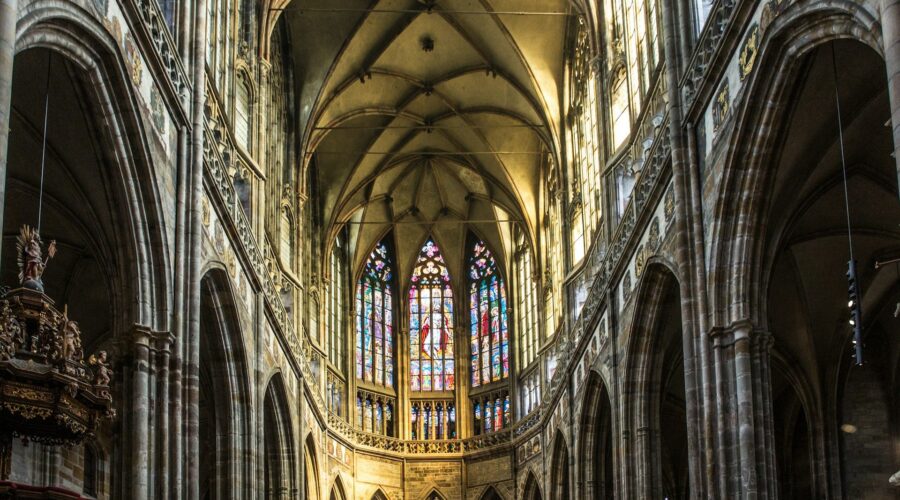
Welcome to the Brethren Church
The Brethren Church is a Christian denomination that originated in Germany in the 1700s. Brethren churches are known for their emphasis on simple living, pacifism, and service to others. Today, there are Brethren churches all over the world, with over 1 million members.
History of the Brethren Church
The Brethren Church was founded by Alexander Mack in 1708 in Schwarzenau, Germany. Mack was a Mennonite who was dissatisfied with the state church of his time. He believed that the church should be based on the teachings of Jesus Christ and that it should be separate from the state. Mack and his followers were persecuted for their beliefs, and they were forced to flee Germany in 1719. They eventually settled in Pennsylvania, where they established the first Brethren church in America.
Beliefs of the Brethren Church
The Brethren Church is a Protestant denomination, and it shares many of the same beliefs as other Protestant churches. However, there are some key beliefs that are unique to the Brethren Church:
- Pacifism: Brethren believe that war is always wrong. They refuse to participate in war, even in self-defense.
- Simple living: Brethren believe that Christians should live a simple life, free from material possessions.
- Service to others: Brethren believe that Christians are called to serve others, especially the poor and the needy.
Practices of the Brethren Church
Brethren churches are known for their simple worship services. They typically use a cappella music, and they focus on the preaching of the Bible. Brethren also practice communion and baptism.
In addition to their worship services, Brethren churches are also involved in a variety of outreach programs. These programs include disaster relief, feeding the hungry, and providing shelter for the homeless.
The Brethren Church Today
Today, the Brethren Church is a growing denomination. There are over 1 million Brethren members in over 100 countries. The Brethren Church is committed to its core beliefs of pacifism, simple living, and service to others.
How to Find a Brethren Church
If you are interested in finding a Brethren church, you can visit the website of the Church of the Brethren. The website provides a directory of Brethren churches in the United States and Canada.
Additional Resources
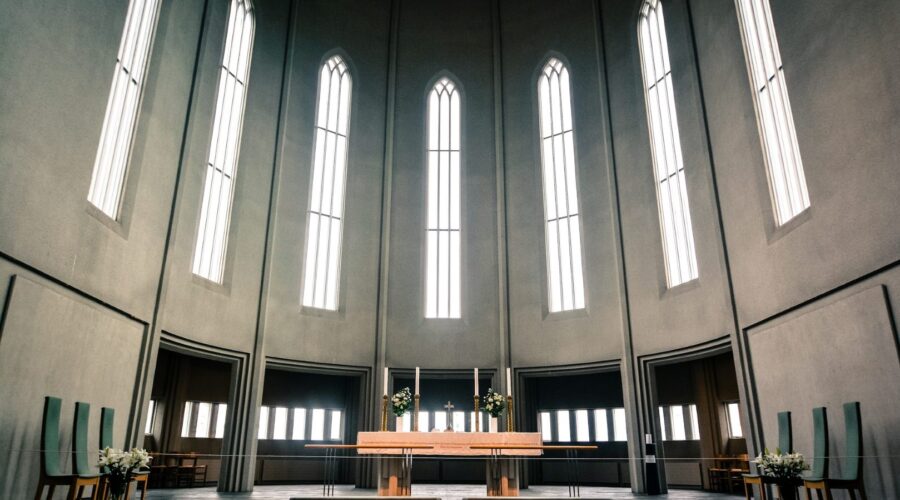
Embark on the Journey of Self-Discovery: The River of Life
Introduction
Life is a continuous flow, an ever-changing tapestry of experiences that shapes who we are. Like a river, our lives meander through different landscapes, encountering obstacles and opportunities that define our journey towards self-discovery.
The Source: Our Beginnings
Birth and Childhood
The source of the river of life is our birth and early childhood. This formative period molds our values, beliefs, and aspirations. The experiences we have with family, friends, and educators shape our perspectives and lay the foundation for our future.
The Tributaries: Affections and Influences
As we flow through life, we encounter a multitude of tributaries that shape our course. These tributaries represent the people, experiences, and passions that influence our development.
Relationships
Our relationships with loved ones, whether romantic, familial, or platonic, can significantly impact our direction. They provide support, challenge us to grow, and teach us the true meaning of connection.
Education and Career
The choices we make regarding our education and career can influence our path. These experiences not only shape our skills and knowledge but also contribute to our sense of purpose and fulfillment.
Challenges and Adversity
The river of life is not without its rapids and waterfalls. Challenges and adversity can test our limits and force us to re-evaluate our priorities. However, these experiences can also lead to resilience, growth, and a deeper understanding of ourselves.
The Meandering Path: Choices and Transitions
As we navigate the river of life, we are faced with countless choices and transitions. These decisions can shape the direction of our journey and bring about profound changes.
Life Transitions
Major life events, such as marriage, parenthood, or retirement, can mark significant transitions in our lives. These pivotal moments require us to adapt, re-evaluate, and embark on new chapters.
Purpose and Meaning
At times, we may find ourselves questioning the purpose and meaning of our lives. It is through introspection, self-reflection, and seeking connections with our values that we can discover what truly fulfills us.
The Delta: The Convergence of Experiences
The Sum of Our Parts
The delta of the river of life represents the confluence of all our experiences. It is where the tributaries of our past converge to create a unique and multifaceted tapestry that defines who we are.
Wisdom and Legacy
As we reach the end of our journey, we carry with us the wisdom and lessons we have gained along the way. Our legacy is not only defined by our accomplishments but also by the impact we have made on others.
Navigating the River: Tips for Self-Discovery
- Embrace the Flow: Accept that life is a dynamic process and resist the urge to control every aspect of your journey.
- Reflect on Your Experiences: Take time to pause and reflect on the lessons you have learned and the growth you have experienced.
- Seek Connections: Forge meaningful relationships with others who support and inspire you.
- Embrace Challenges: View obstacles as opportunities for growth and resilience.
- Find Your Purpose: Explore your interests and values to discover what truly drives you.
- Live with Gratitude: Appreciate the moments, both big and small, that make life meaningful.
Conclusion
The river of life is a metaphor for the dynamic and ever-changing nature of our existence. By embracing the flow, seeking connections, navigating challenges, and reflecting on our experiences, we embark on a lifelong journey of self-discovery. May the river of your life lead you to a place of fulfillment, wisdom, and a profound understanding of your unique purpose.
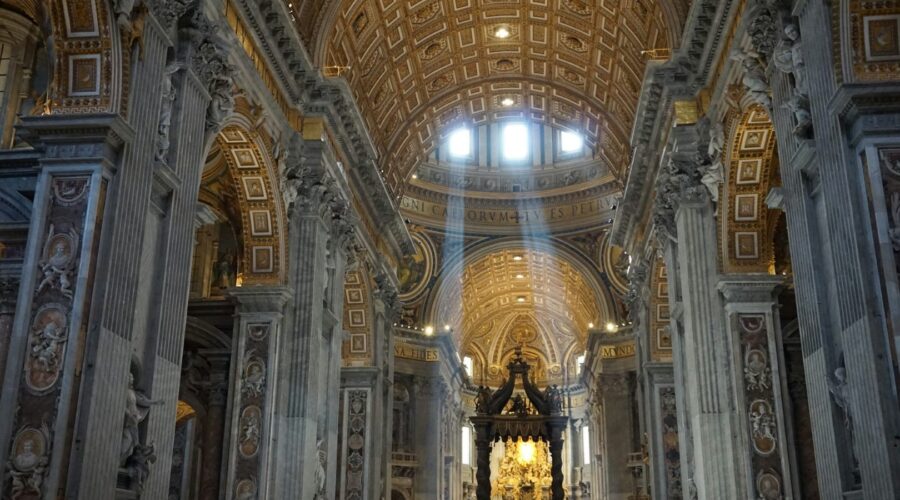
Discover the Faith Methodist Church: A Haven of Inclusivity and Spiritual Growth
About Faith Methodist Church
Nestled in the heart of a vibrant community, Faith Methodist Church stands as a beacon of hope and inclusivity. Our congregation welcomes people from all walks of life, embracing diversity and fostering a sense of belonging. We strive to create an environment where individuals can connect with God, grow in their faith, and make a difference in the world.
Our Mission
Empowering Spiritual Journeys
We believe that every person has the potential to experience a transformative connection with God. Through our vibrant worship services, thought-provoking messages, and nurturing fellowship opportunities, we empower individuals to explore and deepen their faith.
Nurturing Inclusivity
Faith Methodist Church is an open and affirming community that welcomes people of all ages, races, ethnicities, gender identities, sexual orientations, and abilities. We celebrate the uniqueness of each individual and strive to create a space where everyone feels valued and respected.
Engaging in Service
As followers of Christ, we believe in the importance of serving others. We actively engage in a variety of outreach programs, both locally and globally, to make a positive impact on our community and the world. Whether it’s volunteering at a soup kitchen, supporting a local mission, or advocating for social justice, we strive to live out our faith through acts of compassion and service.
Our Core Values
- Love
- Grace
- Inclusivity
- Service
- Transformation
Our Beliefs
Faith Methodist Church is a Wesleyan-Arminian church, which means we hold to the core beliefs of John Wesley and the early Methodists, including:
- Scripture as the sole rule of faith and practice
- The importance of grace and a personal relationship with God
- The doctrine of entire sanctification, or the possibility of living a holy life
- The sacraments of baptism and holy communion
Our Worship Services
Our Sunday morning worship services are a vibrant and meaningful experience designed to connect with God and inspire our faith journey. Our worship style is contemporary and engaging, featuring a blend of traditional and modern music, thought-provoking sermons, and opportunities for prayer and reflection.
We also offer a variety of other worship and devotional opportunities throughout the week, including:
- Midweek prayer meetings
- Bible study groups
- Youth and children’s programs
- Seasonal and special services
Our Church Leadership
Faith Methodist Church is led by a passionate and dedicated team of pastors, elders, and lay leaders who are committed to the spiritual growth and well-being of our congregation. They provide guidance, support, and mentorship, working together to create a thriving and welcoming community.
Join Our Community
Whether you’re new to the faith or a lifelong Christian, we invite you to join our community of believers at Faith Methodist Church. We believe that together, we can deepen our connection with God, support one another on our spiritual journeys, and make a positive difference in the world.
To learn more about our church and get involved, please visit our website at www.faithmethodistchurch.org. You can also find us on Facebook, Instagram, and Twitter.
Contact Information Address: 123 Main Street, Anytown, CA 12345 Phone: (555) 123-4567 Email: [email protected] 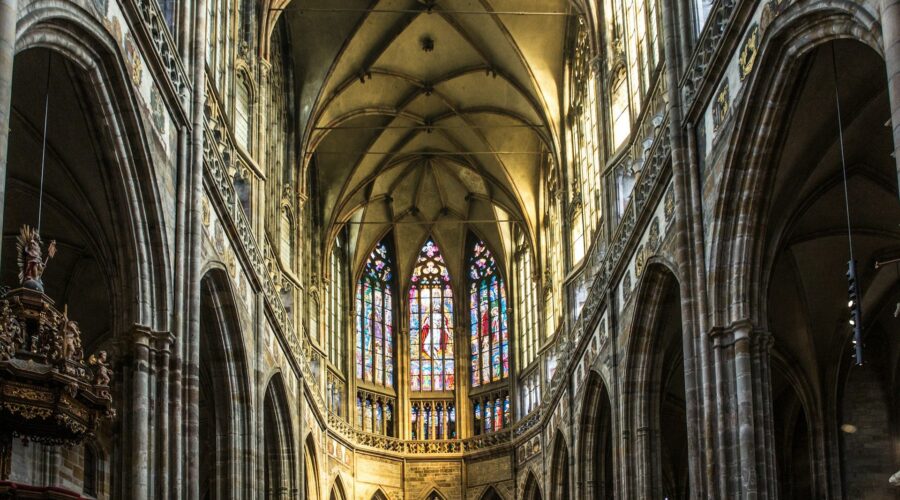
Discover the Apostolic Faith Church: A Comprehensive Guide
Introduction
The Apostolic Faith Church is a global Pentecostal denomination that emphasizes the experience of the Holy Spirit, faith healing, and divine revelation. Founded in 1906 in Los Angeles, California, the church has spread to over 130 countries, with an estimated membership of over 2 million.
History and Beliefs
Origins
The Apostolic Faith Church traces its roots back to a revival meeting in Azusa Street, Los Angeles, in 1906. Led by William Seymour, an African-American preacher, the meeting attracted people from diverse backgrounds who experienced spiritual manifestations such as speaking in tongues, prophesying, and healings.
Core Beliefs
- The Bible is the infallible Word of God.
- Jesus Christ is the Son of God and the Savior of the world.
- The Holy Spirit is the third person of the Trinity and empowers believers.
- Faith healing is a gift from God.
- Divine revelation is necessary for spiritual growth.
Governance and Structure
Leadership
The Apostolic Faith Church is governed by a General Overseer and a General Presbytery. The General Overseer is elected by the General Presbytery, which is composed of ordained ministers from around the world.
Hierarchy
The church has a hierarchical structure with the following levels:
- General Overseer
- Assistant General Overseers
- District Overseers
- Pastors
Worship and Practices
Services
Apostolic Faith Church services are typically characterized by intense worship, prayer, and the manifestation of the Holy Spirit. Services often include:
- Hymns and spiritual songs
- Preaching and teaching
- Prayer and intercession
- Speaking in tongues
- Faith healing
Sacraments
The Apostolic Faith Church recognizes two sacraments:
- Baptism: Immersion in water in the name of Jesus Christ for the remission of sins and the reception of the Holy Spirit.
- Communion: The sharing of bread and grape juice to commemorate the death and resurrection of Jesus Christ.
Outreach and Ministries
Mission
The Apostolic Faith Church has a strong mission to spread the gospel and reach the lost. This mission is carried out through evangelistic campaigns, church planting, and social outreach programs.
Ministries
The church offers a variety of ministries to meet the needs of its members and the community, including:
- Sunday School and Bible study
- Youth and children’s programs
- Counseling and support services
- Food banks and homeless shelters
Current Challenges and Future Prospects
Challenges
The Apostolic Faith Church faces several challenges, including:
- Maintaining unity and doctrinal purity in a rapidly growing denomination.
- Addressing societal issues such as poverty and discrimination.
- Adapting to cultural changes while preserving the core teachings of the church.
Prospects
Despite these challenges, the Apostolic Faith Church remains optimistic about its future prospects. The church continues to grow and expand globally, and its emphasis on spiritual experiences and faith healing attracts many believers seeking a deeper relationship with God.
Conclusion
The Apostolic Faith Church is a vibrant and growing Pentecostal denomination with a rich history and a global presence. Its emphasis on the experience of the Holy Spirit, faith healing, and divine revelation has made it a popular destination for those seeking a supernatural encounter with God.
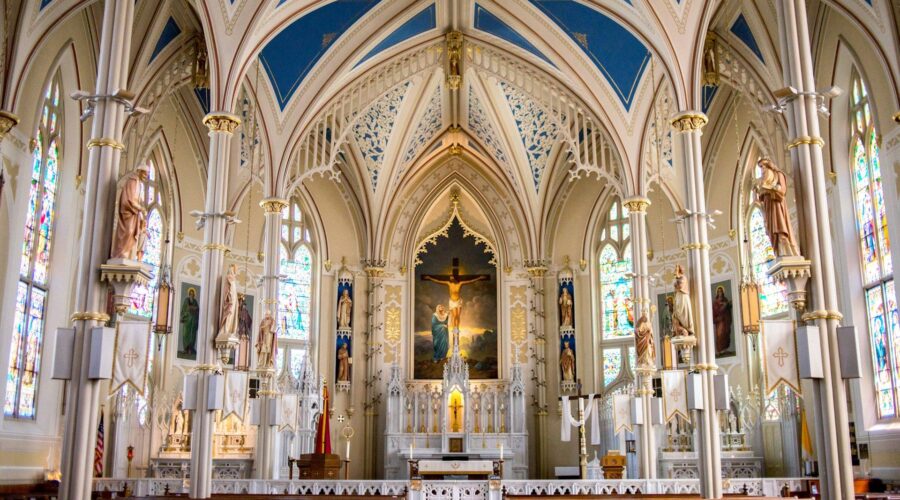
Saint Catherine of Alexandria: A Symbol of Faith, Wisdom, and Courage
Saint Catherine of Alexandria is a revered figure in Christianity, celebrated as a martyr and a patron saint of scholars, philosophers, and those facing educational challenges. Throughout history, her story has inspired countless individuals with her unwavering faith, profound wisdom, and extraordinary courage.
Early Life and Education
Saint Catherine was born in the 3rd century AD in Alexandria, Egypt, to wealthy and influential parents. From a young age, she displayed exceptional intelligence and pursued an extensive education in philosophy, rhetoric, mathematics, and medicine. According to legend, she mastered seven liberal arts and could speak multiple languages.
Catherine’s intellectual brilliance caught the attention of the Roman emperor Maxentius, who summoned her to discuss religion. Impressed by her eloquence and knowledge of Scripture, Maxentius attempted to convince her to renounce her Christian beliefs and embrace paganism.
The Encounter with Maxentius
During the encounter, Catherine engaged in a spirited debate with pagan philosophers and scholars. Her logic and eloquence left them speechless, and she ultimately converted Maxentius’s wife, Valeria Maximilla, to Christianity.
Enraged by Catherine’s influence, Maxentius ordered her to be tortured and killed. However, she miraculously survived each execution attempt, including being burned at the stake and broken on a spiked wheel.
The Mystical Vision and Martyrdom
In prison, Catherine received a mystical vision of Christ and Mary. She was promised that she would be crowned as an eternal bride and queen of heaven. Encouraged by this vision, she refused to renounce her faith, and Maxentius ordered her execution by beheading.
According to legend, Catherine’s severed head and body miraculously exuded milk instead of blood. Angels carried her remains to Mount Sinai, where they were later discovered by monks.
Legacy and Veneration
Saint Catherine of Alexandria has been revered as a symbol of faith, wisdom, and courage throughout history. She is the patron saint of:
- Scholars and philosophers
- Students
- Libraries and universities
- Wheelwrights and mechanics
Many churches and institutions have been dedicated in her honor, and her story continues to inspire people of all ages.
Symbolism and Iconography
Saint Catherine is often depicted in art with the following symbols:
- The wheel: Represents the spiked wheel on which she was tortured.
- The sword: Signifies her beheading.
- The palm branch: Symbolizes her martyrdom.
- The book: Represents her wisdom and education.
Catherine’s iconic image often shows her standing next to a broken wheel, holding a sword and a book, clad in royal attire.
Prayer to Saint Catherine
“O glorious Saint Catherine, Virgin and Martyr, who didst triumph over the power of tyrants, and confound the wisdom of the learned, intercede for me with God, that I may overcome the temptations of the world, the flesh, and the devil, and attain to the everlasting crown of glory. Amen.”
Conclusion
Saint Catherine of Alexandria is a timeless figure who embodies the virtues of faith, wisdom, and courage. Her story continues to inspire and encourage countless individuals, reminding us of the power of steadfastness in the face of adversity and the pursuit of knowledge and truth.
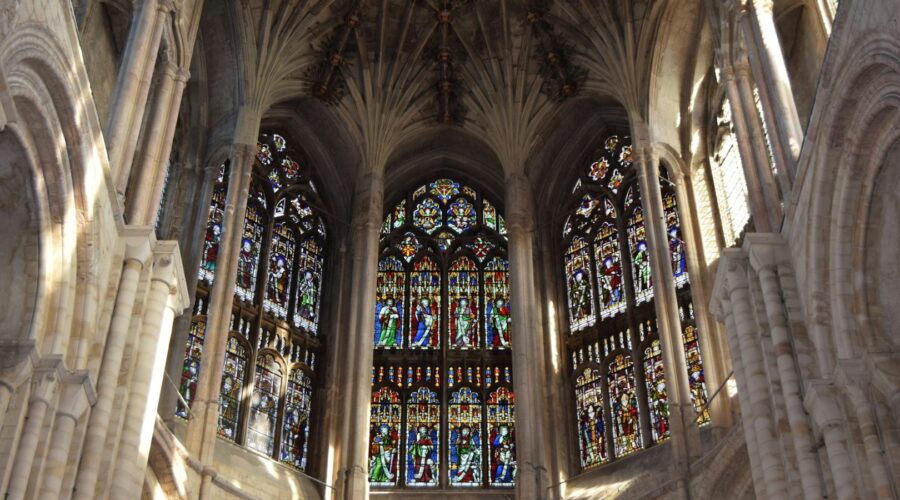
Unlocking Faith: A Comprehensive Guide to Hillside Christian Church
About Hillside Christian Church
Nestled amidst the serene hills, Hillside Christian Church stands as a beacon of faith and community. Established in the heart of the suburban neighborhood, the church has been a pillar of spiritual growth and outreach for over half a decade.
Guided by the unwavering belief in the teachings of Jesus Christ, Hillside Christian Church embraces a diverse and inclusive congregation. With a mission to inspire, equip, and empower followers, the church offers a wide range of ministries, programs, and events tailored to meet the spiritual needs of individuals and families.
Ministries and Programs
Sunday Worship Services
The cornerstone of Hillside Christian Church, the Sunday worship services provide a unique opportunity for spiritual renewal and connection.
- Traditional Service: A classic worship experience with hymns, Bible readings, and a sermon.
- Contemporary Service: A vibrant and uplifting worship service featuring contemporary music and a relevant message.
Community Groups
Foster meaningful relationships and grow in faith through our vibrant community groups.
- Small Groups: Weekly gatherings for Bible study, prayer, and fellowship.
- Life Groups: Age-specific groups for young adults, families, and seniors.
- Men’s and Women’s Ministries: Dedicated groups for spiritual growth and discipleship.
Youth and Children’s Programs
Nurture the faith of young ones through our engaging programs tailored to their specific needs.
- Sunday School: Age-appropriate Bible teaching for children.
- Youth Group: A safe and fun place for youth to connect, grow, and serve.
- Vacation Bible School: An exciting summer program filled with Bible stories, games, and crafts.
Outreach and Missions
Live out the commandment to love your neighbor through our outreach and mission programs.
- Food Pantry: Providing assistance to families in need.
- Community Service: Engaging in local projects to support the community.
- Missions Trips: Traveling to both domestic and international destinations to share the love of Christ.
Facility and Location
Hillside Christian Church is housed in a modern and spacious facility designed to foster a welcoming and comfortable environment for worship and community events.
- Sanctuary: A large and inviting worship space with state-of-the-art acoustics and lighting.
- Fellowship Hall: A versatile space for gatherings, meals, and special events.
- Classrooms: Dedicated spaces for Bible study, small groups, and children’s programs.
- Library: A resource center filled with books, videos, and materials for spiritual growth.
Located at 123 Hillside Drive, our church is easily accessible and offers ample parking.
Contact and More Information
To connect with Hillside Christian Church and learn more about our programs and services, please contact us:
- Website: www.hillsidechristian.org
- Email: [email protected]
- Phone: (555) 123-4567
We invite you to visit us and experience the vibrant and welcoming community at Hillside Christian Church. Together, let us journey in faith and discover the transformative power of God’s love.
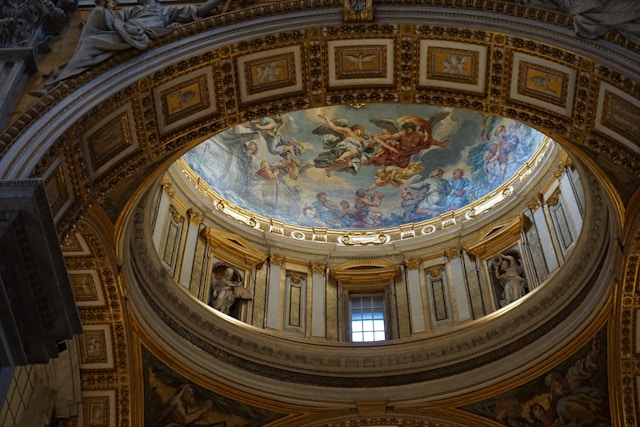
Find an Iglesia ni Cristo Near You: A Comprehensive Guide
Introduction
Iglesia ni Cristo (INC) is a Christian denomination known for its strong emphasis on family values, unity, and service to others. With over 6 million members worldwide, finding an Iglesia ni Cristo near you can be easy. This guide will provide detailed steps, helpful resources, and practical tips to locate the closest INC congregation in your area.
Online Search
INC Official Website
The official INC website is a reliable source for finding congregations. Visit the “Locations” section and use the interactive map or search function to find INC locales near you.
INC App
The INC Mobile App (available for iOS and Android) features a “Find a Church” tool. This tool can detect your location and display a list of nearby INC congregations, along with their addresses and contact details.
Local Resources
Yellow Pages and Directories
Check local phone directories or online listings for churches under the “Iglesia ni Cristo” category. This method may provide more localized and up-to-date information than online searches.
Community Outreach
Inquire at local community centers, libraries, or other public gathering places about INC congregations in the area. Members of the INC are often actively involved in community outreach programs.
Other Means
Social Media
Follow the official INC social media accounts on platforms like Facebook, Instagram, and Twitter (@iglesianicristoofficial). These accounts often share updates about INC congregations and upcoming events.
Word of Mouth
Ask friends, colleagues, or neighbors if they are aware of any INC congregations nearby. The INC has a strong network of members who can provide valuable information.
Tips for Finding the Right Congregation
Consider Your Location
Choose a congregation that is conveniently located for you to attend regular worship services and other activities.
Visit Multiple Congregations
Don’t limit yourself to one congregation. Visit several churches to experience their worship styles, spiritual atmosphere, and member engagement.
Connect with Members
Introduce yourself to members of the congregation and ask questions about their experiences. This can help you determine if the congregation aligns with your spiritual needs and values.
Attend Special Events
INC congregations often host special events like Bible studies, youth gatherings, and community outreach programs. Attending these events can provide a deeper understanding of the congregation and its mission.
Benefits of Joining an INC Congregation
- Strong sense of community and belonging
- Biblical teachings and spiritual guidance
- Opportunities for personal growth and service
- Support in overcoming life’s challenges
- Contribution to a global movement focused on unity and service
Conclusion
Finding an Iglesia ni Cristo near you is a rewarding experience. By following these steps and utilizing the resources provided, you can easily locate the nearest INC congregation and immerse yourself in a thriving community of faith. The INC welcomes all individuals from all backgrounds to join in its mission of spreading God’s word and serving humanity.

Unveiling the Grandeur of the Cathedral of Praise: A Comprehensive Guide
In the heart of Lagos, Nigeria, stands a magnificent edifice that reverberates with the praises of the Almighty—the Cathedral of Praise. This architectural masterpiece is not just a place of worship; it’s a testament to faith, grandeur, and community. Let’s delve into the fascinating world of the Cathedral of Praise, exploring its history, design, significance, and impact.
History and Construction
The Cathedral of Praise was conceived in 1998 by the charismatic Bishop David Oyedepo, the General Overseer of Living Faith Church Worldwide. Its construction commenced in 2002, and the foundation stone was laid by former Nigerian President Olusegun Obasanjo. The cathedral was officially inaugurated in September 2004.
The project involved the collaboration of renowned architects, engineers, and artisans from around the world. The construction process was meticulously planned and executed, utilizing state-of-the-art technology and materials.
Design and Architecture
The Cathedral of Praise is a masterpiece of contemporary architecture, blending grandeur and functionality. It is designed in the shape of a cross, with a central dome that soars to an impressive height of 120 meters.
Exterior Facade
The cathedral’s exterior is adorned with intricate carvings, stained glass windows, and gleaming marble. The iconic dome, topped with a golden cross, is a symbol of hope and faith that can be seen from miles around.
Interior Design
The interior of the cathedral is equally breathtaking. The vast sanctuary can accommodate up to 50,000 worshipers. The auditorium features world-class acoustics and lighting, creating an immersive and awe-inspiring atmosphere.
- Pulpit: The pulpit is a central feature of the cathedral, designed to amplify the voice of the preacher and convey the message of the gospel.
- Altar: The altar, located in the chancel, is a symbol of communion and sacrifice.
- Stained Glass Windows: The cathedral’s magnificent stained glass windows depict scenes from the Bible, providing a visual narrative of faith and history.
Significance and Impact
The Cathedral of Praise is not just a building; it’s a symbol of spirituality, unity, and community. It has become a landmark of Lagos and a destination for pilgrims and tourists alike.
On a daily basis, the cathedral hosts numerous church services, prayer meetings, and conferences. It also offers a wide range of social and community outreach programs, including feeding programs, medical clinics, and educational initiatives.
Visiting the Cathedral
If you’re planning a visit to the Cathedral of Praise, here are a few practical details:
- Location: The cathedral is located in Canaanland, Ota, Ogun State, about 30 kilometers west of Lagos.
- Tours: Guided tours of the cathedral are available at designated times.
- Dress Code: Visitors are expected to dress modestly and respectfully when visiting the cathedral.
- Photography: Photography is permitted in designated areas within the cathedral.
Additional Resources
- Official Website of the Cathedral of Praise
- Wikipedia Page on the Cathedral of Praise
- Virtual Tour of the Cathedral of Praise
Conclusion
The Cathedral of Praise is a testament to the power of faith, architecture, and community. It is not only a place of worship but also a symbol of hope, inspiration, and service. Whether you’re a pilgrim seeking spiritual nourishment or a tourist admiring architectural grandeur, the Cathedral of Praise is an unforgettable destination that will leave a lasting impression.
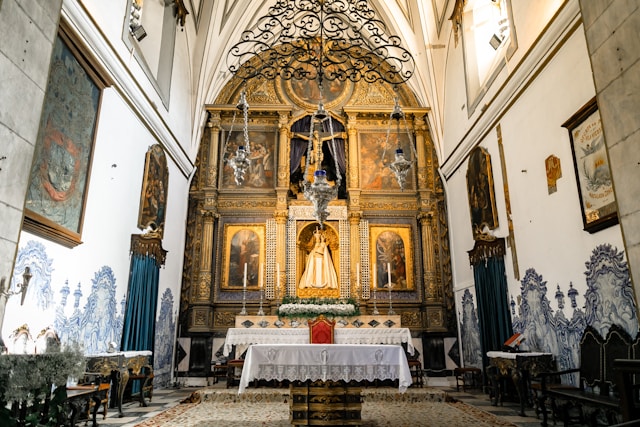
Mount Zion: A Holy Land Steeped in History, Religion, and Culture
Mount Zion is a hill in Jerusalem, Israel, with a rich and storied history that spans millennia. It is considered a sacred site in Judaism, Christianity, and Islam and has been a center of religious and cultural significance for centuries.
History of Mount Zion
The earliest known settlement on Mount Zion dates back to the Bronze Age, around 3000 BC. It was later captured by King David in the 10th century BC and became the capital of the Kingdom of Israel. Zion became a symbol of the Jewish people and their connection to the Promised Land.
After the Babylonian conquest of Jerusalem in 586 BC, Mount Zion was destroyed. It was later rebuilt by the Romans in the 1st century AD and became known as Aelia Capitolina. In the 4th century AD, the Byzantine emperor Constantine the Great built a church on the site, which became known as the Church of the Holy Sepulchre.
Mount Zion continued to be a contested site throughout the Middle Ages, with various empires and religious groups fighting for control of the hill.
Religious Significance
Mount Zion is considered a holy site in Judaism, Christianity, and Islam.
Judaism
- Zion is mentioned over 150 times in the Hebrew Bible, often as a symbol of the Promised Land and the city of Jerusalem.
- The Temple Mount, located on the eastern slopes of Mount Zion, is the holiest site in Judaism.
- The Western Wall, a remnant of the Second Temple, is a popular pilgrimage site for Jews.
Christianity
- Christians believe that Jesus Christ was crucified and buried on Mount Zion.
- The Church of the Holy Sepulchre, built on the site of Jesus’ crucifixion and burial, is a major pilgrimage site for Christians.
- Mount Zion is also mentioned in the New Testament, often as a symbol of the heavenly Jerusalem.
Islam
- Muslims believe that Muhammad ascended to heaven from Mount Zion.
- The Dome of the Rock, built on the site of Muhammad’s ascension, is a holy site for Muslims.
- Mount Zion is mentioned in the Quran several times, including in the story of Muhammad’s ascension.
Cultural Significance
In addition to its religious significance, Mount Zion has also played a role in the culture and history of the region.
The hill has been the site of numerous battles and sieges throughout history.
Mount Zion is also home to a number of cultural landmarks, including:
- The Old City of Jerusalem
- The Tower of David
- The Armenian Quarter
- The Jewish Quarter
- The Christian Quarter
- The Muslim Quarter
Visiting Mount Zion
Mount Zion is a popular tourist destination, and there are a number of ways to visit the hill.
Visitors can walk up to Mount Zion from the Old City of Jerusalem, which takes about 15-20 minutes.
There are also a number of buses and taxis that can take visitors to the hill.
Once on Mount Zion, visitors can explore the various religious and cultural landmarks, including the Church of the Holy Sepulchre, the Dome of the Rock, and the Western Wall.
Tips for Visiting Mount Zion
- Dress respectfully when visiting religious sites.
- Be aware of your surroundings and take precautions against theft.
- Drink plenty of water, especially during the summer months.
- Wear comfortable shoes, as there is a lot of walking involved.
- Allow plenty of time to explore the hill, as there is much to see and do.
Conclusion
Mount Zion is a fascinating and historically significant site that has played a major role in the history, religion, and culture of the region.
Whether you are interested in its religious significance, its cultural heritage, or simply its stunning views, Mount Zion is a must-visit destination in Jerusalem.
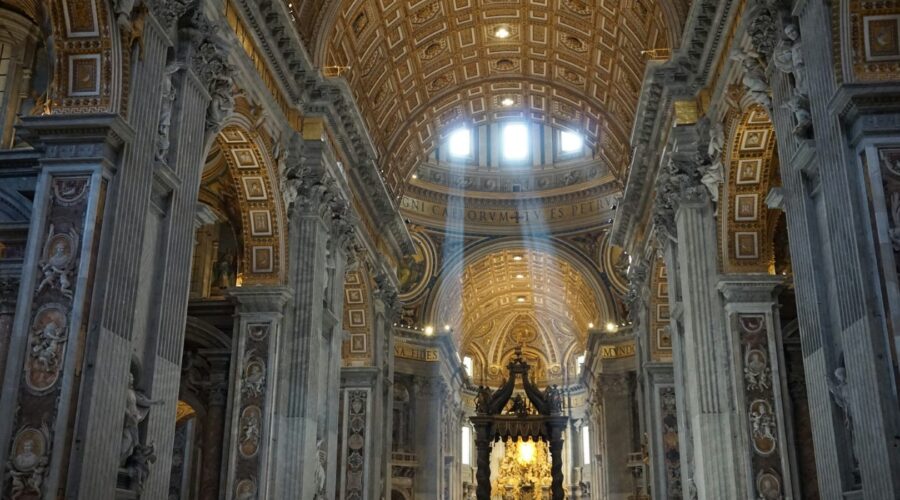
Christ the Good Shepherd: A Symbol of Love, Guidance, and Protection
Introduction
In the Christian tradition, Jesus Christ is often depicted as the Good Shepherd, a symbol of love, guidance, and protection. This symbolism is rooted in the ancient practices of shepherding and the deep bond between shepherds and their flocks.
The Role of a Shepherd
In ancient Israel, shepherds played a vital role in society. They were responsible for:
*
Guiding and Protecting the Flock
Shepherds would lead their flocks to grazing pastures and water источников, ensuring their well-being. They also protected them from predators and other dangers.
*
Caring for the Sheep
Shepherds provided medical care, assisted with lambing, and kept the flock healthy and strong.
*
Seeking Lost Sheep
If a sheep went astray, the shepherd would diligently search for it, leaving the rest of the flock to find the lost one.
Christ as the Good Shepherd
Jesus Christ identified himself as the Good Shepherd in the Gospel of John:
“I am the good shepherd. The good shepherd lays down his life for the sheep.” (John 10:11)
Love and Sacrifice
Christ’s love for his followers is likened to that of a shepherd for his flock. He is willing to sacrifice his own life for their well-being and salvation.
Guidance and Protection
Jesus provides spiritual guidance and protection to his followers. He leads them along the path of righteousness and shields them from spiritual dangers.
Seeking Lost Souls
Christ actively seeks out and rescues those who have lost their way or are separated from him. He extends his love and forgiveness to all, regardless of their past mistakes.
The Parable of the Lost Sheep
The Parable of the Lost Sheep (Matthew 18:12-14) illustrates Christ’s role as the Good Shepherd:
* A shepherd leaves 99 sheep to find one that has gone astray.
* He diligently searches for the lost sheep until he finds it.
* He rejoices over the return of the lost sheep and celebrates its salvation.This parable emphasizes Christ’s love and compassion for every individual, even those who have gone astray.
The Shepherd’s Crook
The shepherd’s crook is a symbol of Christ’s authority and guidance. It is used to:
* Guide the sheep along the path.
* Protect the sheep from harm.
* Retrieve lost sheep and bring them back to the flock.The Sheep as Followers
The sheep in the Good Shepherd imagery represent Christ’s followers. They are:
* Dependent on the shepherd for guidance and protection.
* Willing to follow the shepherd’s lead.
* In need of forgiveness and restoration when they stray.Applications of the Good Shepherd Symbolism
The Good Shepherd symbolism has practical applications in the Christian life:
*
Trust and Reliance
Christians should trust and rely on Christ as their Shepherd, knowing that he loves, guides, and protects them.
*
Seeking God’s Will
Christ provides guidance in our lives, helping us to discern his will and follow his path.
*
Restitution and Reconciliation
When we stray from the path, Christ seeks us out and offers forgiveness and restoration.
*
Evangelism and Outreach
Christians are called to be imitators of Christ and to extend his love and compassion to others, especially those who are lost or in need.
Conclusion
Christ the Good Shepherd is a powerful symbol of love, guidance, and protection. It reminds us of the deep bond between God and his followers. By trusting in Christ as our Shepherd, we can experience his love, know his guidance, and find refuge in his care.